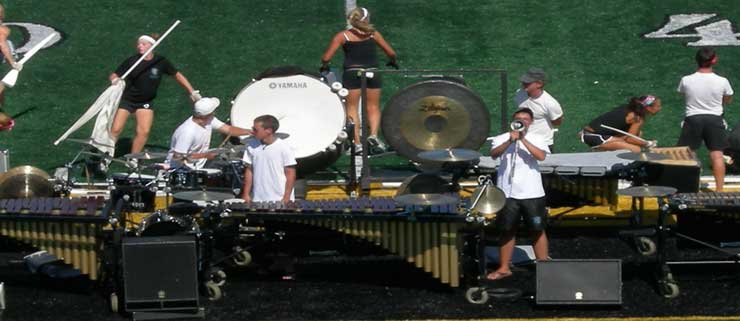 John Mindeman is the quintessential 21st century
musician. He has spent time in national orchestras, performed in jazz
bands and sat in the horn sections of some of the world’s most famous
performers including Joni Mitchell, The Three Tenors and The Moody Blues.
John Mindeman is the quintessential 21st century
musician. He has spent time in national orchestras, performed in jazz
bands and sat in the horn sections of some of the world’s most famous
performers including Joni Mitchell, The Three Tenors and The Moody Blues.
Apart from his extensive resume as a performer, John is also a highly sought after music educator. Having taught at Northern Illinois and Roosevelt University, John is now Assistant Professor of Trombone at Western Illinois University.
John sat down with me to share his insights on developing
ones skills as an educator, and on how to have a positive impact on students of
all ages.
MW: How did you get your start as a trombone teacher?
JM: I got started as a trombone teacher kind of through the back door. I have degrees in Music Performance – not Music Education, so I had no formal training that would allow me to teach in the public school system. But that was ok, because what I wanted to be was a performer, not a teacher! I got my start teaching private students. For me, it was trial and error at first. As I gained more experience, I learned what worked and what didn’t.
MW: Did any of your teachers have an influence on your private teaching approach?
JM: Yes, most definitely. In fact, much of what I teach was
handed down to me by the great musicians I was privileged to study with. Edward
Kleinhammer, George Krem and Edward Kocher were the most important teachers in
my early years, and they each had their unique perspectives on teaching.
With me, Mr. Kleinhammer emphasized the basics – good breathing, consistency, and producing a resonant tone in all registers. From George Krem I learned a lot about style, technique, musicality, and interpretation. Ed Kocher took an all-around approach, emphasizing tone, technique, good articulation, and musicianship. He also taught me what it meant to be a professional in the world of music.Â
For my students, I tend to emphasize the basics – consistently
good tone, clean technique, proper breathing, good intonation, etc. – but
always with the intent of achieving some musical
goal. In later years, I have learned much from teachers of other instruments –
about artistry, extended techniques, improvisation, etc.
MW: As someone who draws from many influences in their playing how do you encourage students to explore different genres and styles of music?
JM: I require my college students to do a lot of listening - all kinds of music - from bluegrass to jazz to classical to music from other cultures. My way of thinking is, when a player exposes him/herself to a wide variety of music, his/her understanding of music in general, and sensitivity to style increases exponentially. Not only that, but exploring many genres stretches your ears and your technique. You can’t help but be a better player for it.
Â







 Scroll down to view the comparison chart of over a dozen different portable digital audio recorders.
Scroll down to view the comparison chart of over a dozen different portable digital audio recorders.